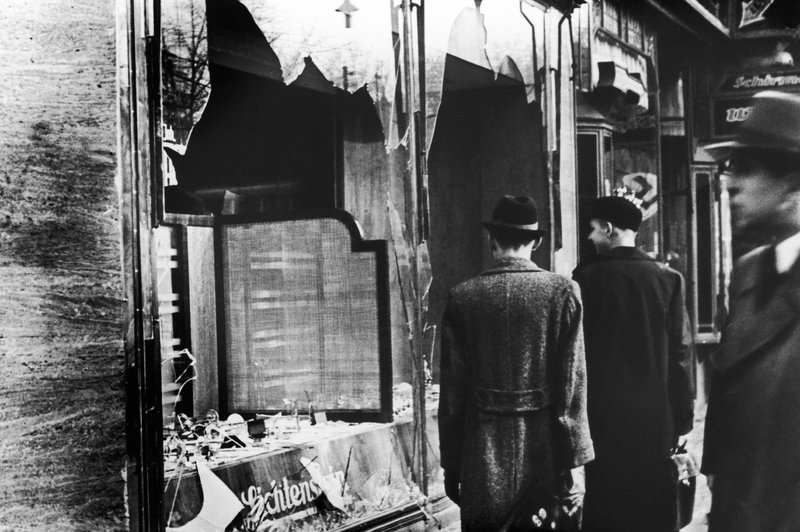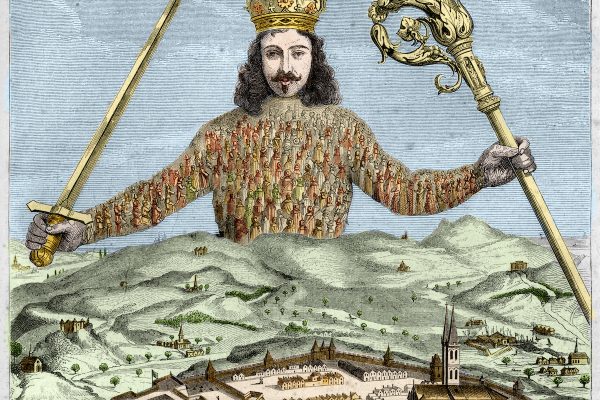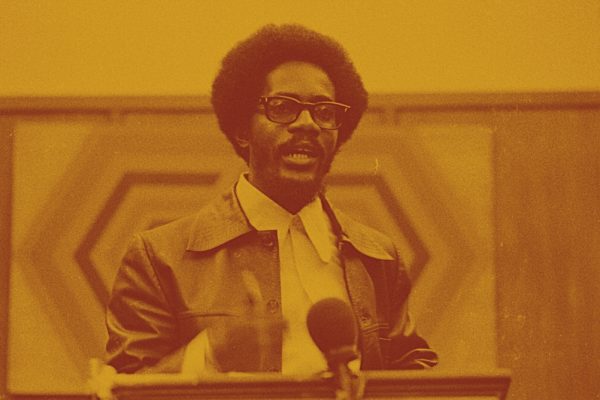My father, Manfred Stanley, passed away in 2004. By the normal methods of calculating such things, he was not a wealthy man. What he lacked in material resources he more than made up for in other ways. In addition to thousands of his books, I have many boxes of his family effects, including hundreds of letters.
In reading through these letters, I am struck by the wide discrepancy between what they reveal of his childhood and the stories of his childhood that he told his children. He had always told me, for example, that the shattered fingers on his hand were the result of a baseball injury that he was too embarrassed to reveal to his mother. The family letters tell the truth. They were rather the result of his raising his hand at the age of six to fend off truncheon blows, and his mother was too afraid to call a doctor. But it is not these inconsistencies that stand out. Rather, in the tale he told of his life, both his greatest wounds and his greatest comforts did not take such raw physical form. The narrative of his life, as he related it, had as its chapters not beatings but spaces.
There was a growing familiarity with seeing agents appear at doorways, in restaurants, asking for documents, looking for enemies of the people.
On July 24, 1939, a few months before my father turned seven, he boarded a plane at Berlin’s Tempelhof Airport. After arriving in Southampton, England, he and his mother, Ilse Stanley, joined many others on the New York City–bound SS Deutschland. As I write this I look at a picture of him sitting at dinner with his mother on that ship. He is smiling but also shrinking into his chair. He had been in hiding since November 8, 1938, Kristallnacht, when he witnessed the burning of the synagogue where his grandfather, Magnus Davidsohn, had been the chief cantor for twenty-seven years.
Davidson had been close with the parents of Ernst vom Rath, the German diplomat who was assassinated in Paris by a Jewish man furious about the treatment of the Jewish people in Germany. On the evening of Kristallnacht, my great-grandfather and his wife visited with their friends, who assured them that they did not blame the Jews for their son’s murder.
Despite the good intentions of my great-grandparents’ friends, though, what Joseph Goebbels called the “righteous indignation” of the German people led to an orgy of violence directed at the synagogues of Germany. After that point, Jews were no longer safe on the streets of Berlin. The Nazis used the pretext of vom Rath’s death to permanently exclude the Jewish people from the German people. From then on, “us” did not include us. After Kristallnacht, we had been removed permanently from public view, thereby masking our fate from our fellow Germans.
Few even in the Jewish community realized what was really occurring.
Kristallnacht is often represented as a radical break with what came before. In fact it was not. Since 1936 many thousands of Jewish citizens of Germany had been taken to secret prisons, such as Sachsenhausen, under the pretext of treason against the German people. As my grandmother, Ilse, recounts in her 1957 memoir The Unforgotten, few even in the Jewish community realized what was really occurring. The open anti-Semitic provocations became ever more intense during these periods, with the clear intention of goading some German citizen of Jewish faith to act out in despair and violence. Vom Rath’s murder became that excuse for violent reprisal, an incident that would be used to permanently remove Germans of Jewish faith from public spaces and ultimately to exile or death.
• • •
My father told me many stories about Berlin. His first memories were of his struggle to read the numerous signs on the grand avenues, his initial excitement about his growing mastery of reading tempered by the realization that so many of them were about him. He learned from these signs that he was the enemy, though at that time he could not quite understand what that meant. He could not understand, as a young child, why he could not join the Nazi marches with the other children.
My father always believed that Central Park was built to make the refugee feel safe.
Judging by the frequency with which he related it, what stood out to him as the most frightening moment occurred on the day he arrived at his favorite park, only to discover that Jewish children were no longer allowed in public parks. Public spaces are for the people. Despite all that came before, it was not until that day, in the park, that he realized beyond any shadow of a doubt he was not one of “the people.” He could not join the marches because his very existence as a Jewish boy was considered an existential threat to the German people.
My father arrived in New York on August 3, 1939. Though he knew perfectly well that it was impossible, he remembered arriving on Central Park Lake. My father always believed that Central Park was built to make the refugee feel safe. In Central Park, he never felt worried that he would be asked to show his Kinderausweis, to prove that his middle name was not “Israel.” He had no other memory of his arrival.
• • •
I hold in my hands my father’s Quota Immigration Visa (No. 13888). It was granted and signed on April 17, 1939, by the American Vice Consul in Berlin, Germany. It was, at that time, extraordinarily difficult to obtain a visa to the United States. The America First Movement was agitating against joining the war and demanding to seal our borders. In 1939, in the pages of that most American of journals, Reader’s Digest, America First’s representative, the aviator Charles Lindbergh, wrote:
It is time to turn from our quarrels and to build our White ramparts again. This alliance with foreign races means nothing but death to us. It is our turn to guard our heritage from Mongol and Persian and Moor, before we become engulfed in a limitless foreign sea. Our civilization depends on a united strength among ourselves; on strength too great for foreign armies to challenge; on a Western Wall of race and arms which can hold back either a Genghis Khan or the infiltration of inferior blood; on an English fleet, a German air force, a French army, an American nation, standing together as guardians of our common heritage, sharing strength, dividing influence.
My father was one of the few Jewish refugees to make it into the United States in those last days before the war. There was already deep suspicion of Jewish refugees, but the borders had not been sealed to them completely. That is how my father avoided the cattle car and the death camp.
There was deep suspicion of Jewish refugees in America, but the borders had not been sealed to them completely.
My father told me that until he was in his early twenties, he would set out his clothing before he went to sleep and turn his alarm clock to two in the morning. When it rang, he would spring out of bed and dress quickly. For some reason, this made him less anxious. One day he decided to tell his mother about his strange habit. She said to him, “I taught you to do that when you were four, to dress quickly in case the knock comes.” What she meant was a knock of warning, to alert them to a visit by the Gestapo.
Between 1936 and Kristallnacht, the German government flooded public spaces with Gestapo agents. In my grandmother’s memoir, she describes the growing familiarity of the German people with seeing agents appear at doorways, in restaurants, asking for documents, looking for enemies of the people where they were rumored to be. It became typical, normal, ordinary, to see such sweeps. At a certain point, people stopped asking when they saw two agents knocking at the apartment next door. Having agents of the government drop by to remove a neighbor was an event that no longer required an explanation.








